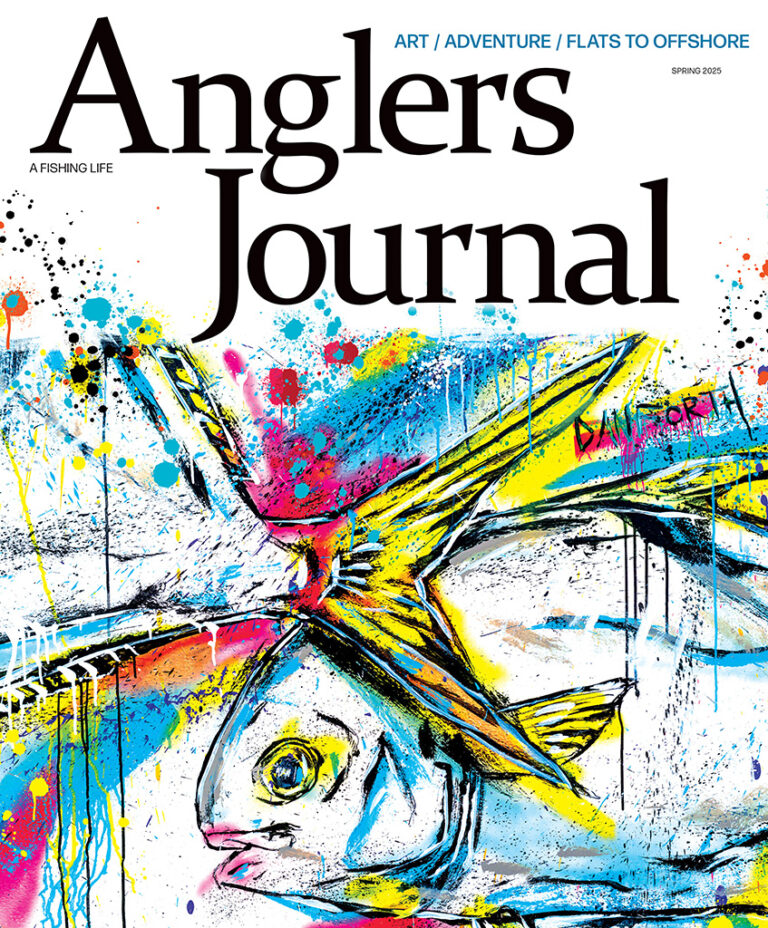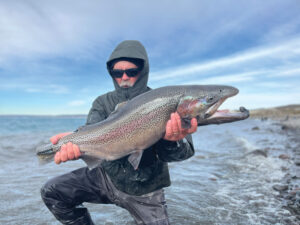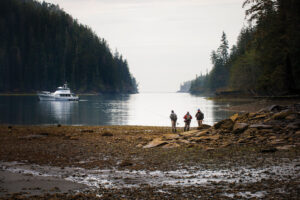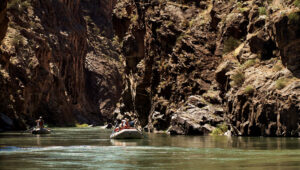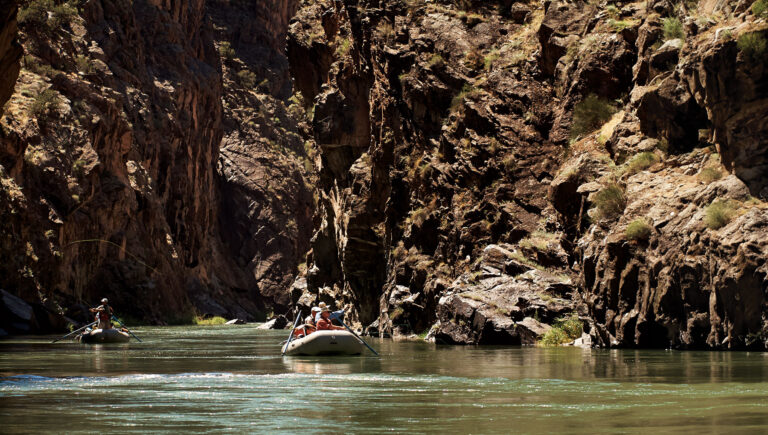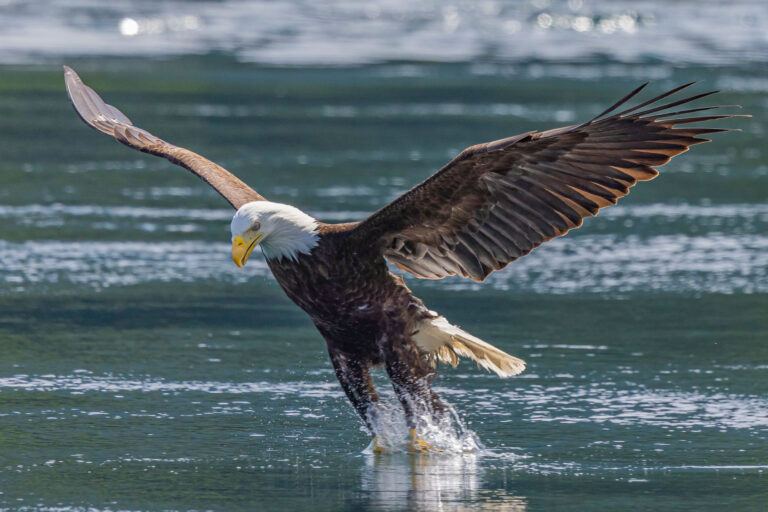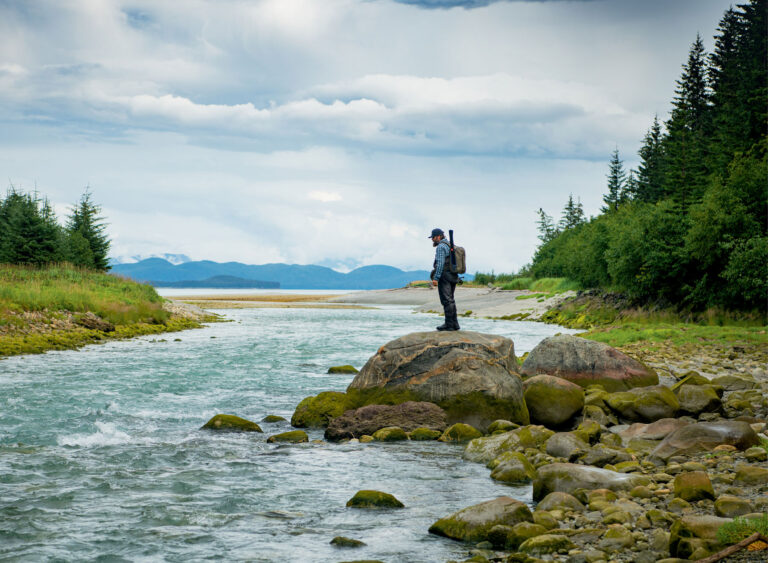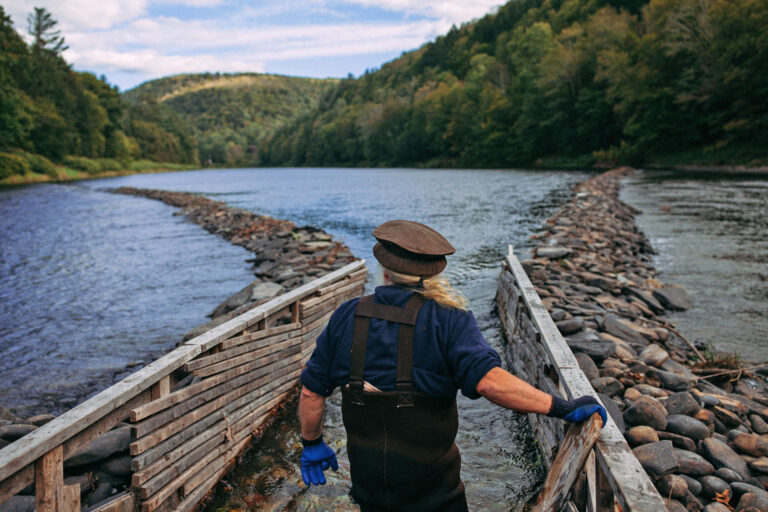Photos by Janne Körkkö
With summer winding down in northern Finland, two men begin gathering pine tar wood well before dark. The dried, weathered pieces of aged stumps will soon be ignited, the flames casting a flickering light on an ancient method of fishing whose practitioners may have dwindled to just these two.
 The scent of tar in the smoke gives the evening a distinctive aroma.
The scent of tar in the smoke gives the evening a distinctive aroma.Spearfishing by firelight is not a particularly effective technique — it’s far easier to flick on the beam of a headlamp than to build and maintain a fire on a metal grill hanging over the water, connected to the bow of a boat. But that misses the point.
Henri Turtinen and Esa Saarela continue to stalk and spear pike, bream and perch to keep the old ways alive. “If no one fished with live fire anymore, the tradition dies,” Turtinen said in an interview from Finland via Skype. While there are quite a few who fish with headlamps, Turtinen and Saarela are the last two who hunt by firelight in Finland. “Someone must do it,” says Turtinen, 39, who manages a private forest and lives in the town of Ii (pronounced “ee.” Yes, it’s the shortest town name in Finland).
The friends fish from a traditional 16-foot river boat they built from pine and spruce, fastening the planks with boat nails and sealing it with caulking cotton and tar. More of the old ways. And when they quietly push off from the banks of the River Iijoki or a nearby lake, the pair are searching for something more elusive than fish.
 Tar wood lights easily.
Tar wood lights easily.“With this fishing method, it is clear that the catch is not important,” says Turtinen, who also enjoys fishing with rod and reel. He spoke of the beauty and attraction of spending dark nights on a still river with the season changing — the fog, the silence, the excitement of seeing a large pike in the wavering light. “The best thing in torch fishing is the quiet, the cold and the smell of the tar wood, which is amazing,” he says. “One cannot explain how relaxing the feeling is on the river. When you are torch fishing, you don’t think of anything but fishing.”
Photographer Janne Körkkö, who took the images for this story, has been shooting Turtinen and Saarela’s nighttime endeavors on the river for about seven years. “It’s like a meditation. I’ve done a lot of interesting projects,” says Körkkö, 39, who has traveled to Iraq five times as a photojournalist, “but this is something more. There is something really beautiful behind it. There is darkness, and there is silence. Nothing is moving. It’s pure magic. It’s the most beautiful project I have done.”
 The friends spear fish by firelight to keep a tradition alive. The wood burns on a 100-year-old metal platform, which fits over a wooden holder.
The friends spear fish by firelight to keep a tradition alive. The wood burns on a 100-year-old metal platform, which fits over a wooden holder.The aromatic smell of the smoke on still, cold nights, carrying with it a light scent of tar, is not easily forgotten. “It’s very unique,” Körkkö says. “I don’t know how to explain how it smells. For me, it’s not only the tar smell; it’s the whole experience.”
The wood is burned on a century-old metal platform or grill called an arina, which fits into a wooden socket on the bow. Turtinen found his in his mother’s attic.
The men move with stealth, given how easily the fish spook. The person in the bow holds the spear and peers intently into the water while the other man moves the boat by paddle. Focus is important. “If the spear touches the boat — even a slight noise — they flee quite easily, and you never see them again,” Turtinen says. “When you see a fish, you put the spear on the water very slowly. That’s the sign to stop [paddling].” The man lowers the spear to within a foot of the prey and then jabs the target.
 The fishermen enjoy eating fried or cold-smoked pike, but the evenings are about more than just fish.
The fishermen enjoy eating fried or cold-smoked pike, but the evenings are about more than just fish.“It sounds as if you’ve taken some nice pike,” I say.
“It sounds as if we’ve occasionally seen some pretty big pike,” Turtinen corrects me. “I have seen some huge pike.”
On a good night, they might spear a couple of pike or bream, and sometimes a big perch, all of which are eaten. “Hell yeah. Nothing is better than fried pike fillet,” Turtinen says, quickly adding, “maybe cold-smoked pike is.”
Conditions must be right to spot fish in the reflected firelight. Too much wind will end a night’s fishing. “Even small waves weaken the visibility so much that one cannot see the bottom anymore,” Turtinen says. Maximum visibility on a calm night is about 3 feet.
The pieces of old pine stumps the men burn come from trees felled hundreds of years ago. Over time, the resin in the pine converts to tar, says Turtinen, who is a forestry expert. “This tar wood is very easy to light,” he says. “It burns quite rapidly. One must add wood to the arina at least once every hour.”
 The business end of a pike spear.
The business end of a pike spear.Spearing fish by firelight was common in the late 19th century; it took place mostly in the spring, when fish were in the shallows spawning. “The catch was massive,” says Turtinen, adding that the government passed rules in the early 1900s prohibiting the practice because of its impact on stocks.
“It was very common in this area before World War II, despite the fact that it was illegal,” he says. The ban was lifted in the 1950s, but spearfishing is prohibited from mid-April to July to protect spawning fish, Turtinen notes.
Winter comes early in Finland. “In northern Finland, we get dark nights in mid-August,” Turtinen says. “The season continues until the shores start to freeze, usually in October. If there is 1 millimeter of frost in the water, there is no point of spearfishing because the boat makes a terrible noise when it breaks the ice, and the fish are frightened away.”
 Ready, aim, fire.
Ready, aim, fire. The friends try to get out several times each fall when conditions are right. After an outing, they sometimes sit around a fire and sip Jaloviina, a traditional Finnish cut brandy, which is a mixture of cognac and clear grain spirit. All three revel in the dark nights, clear skies and the absence of light pollution.
“This is beautiful, something special,” says Körkkö, who accompanies the pair as often as he can, trying to capture the many versions of night on the river, from pitch black to moonlit to foggy. “It’s not a normal project. It’s an old-school project. An art project.” He adds, “I’m looking for the pure firelight.”
In hunting by torchlight and sitting around a fire on the cusp of winter, the men pay homage to ancient ways and ancient people. “I think when mankind invented the spear, one started fishing with the spear,” Turtinen says. “It must have been the first way to fish with any kind of equipment.” Before that, he says, people probably used their bare hands.
Subscribe to Anglers Journal here ▶

